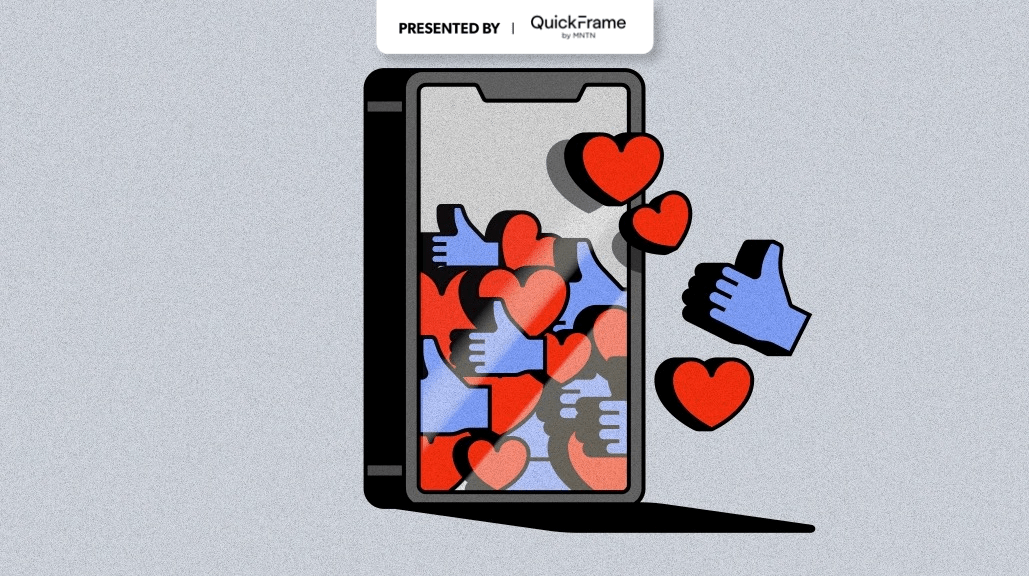Why Pepsi’s new Sprite rival has a new social strategy — and a new target demographic to go with it

Earlier this year, PepsiCo’s Sierra Mist went off the market. So the company launched a similar product called Starry, a new lemon-lime beverage, to fill the void — and compete with Sprite.
Starry’s launch allows PepsiCo to revamp its social media strategy to connect with younger consumers. Sierra Mist’s target demographic was millennials and Gen X, but Starry’s goal is to capture the attention of Gen Z through TikTok, Twitter and Instagram.
Starry’s social strategy is to differentiate its content across the three platforms, according to Michael Smith, senior director of Starry brand marketing. The brand is looking to TikTok as the primary social platform for its marketing mix, due to its popularity with Gen Z. Specifically, Starry’s TikTok content is focused on original short-form content and comedy skits about the brand and leveraging viral trends like what a person would look like in 40 years. Starry also placed QR codes on its beverages to drive consumers to its TikTok page.
“Our consumers utilize several social media platforms, but we’ve been leveraging TikTok and Instagram most as these are the platforms that are driving culture and where we see the highest concentration of our consumer activity taking place,” said Smith. “On each platform, we’re able to activate in highly creative and irreverent ways, engaging authenticity with our fans.”
On Instagram, for example, Smith noted that the brand used Reels for the first time in February during NBA All-Star Weekend to showcase its mascot making unexpected appearances.
Aside from platform-specific efforts, Starry is starting to work with influencers to capture the attention of younger generations. The brand recently rolled out its first partnership with singer and sports influencer Taylor Red to create short-form content and announce giveaways during the NBA Finals. The financial agreement between the parties was not disclosed
“We are built on the premise that a dose of the unexpected makes life a little more fun,” said Smith. “When looking for influencers to partner with, that’s exactly what we look for — someone who embodies the brand spirit and lives their life with a unique, irreverent optimism.”
Starry gave Red creative control to produce the content as long as a specific call-to-action was made. For this campaign, Red told followers to call a phone number to win prizes such as a branded recliner chair, a three-piece suit and a chance to win tickets to the 2024 NBA All Star Game.
While Starry is differentiating content based on platform, it is focusing on basketball fans overall. The brand leveraged digital out-of-home ads around Salt Lake City during NBA All Star Weekend with digital bulletins that captured traffic heading into and out of the city throughout the weekend, as well as digital projections in high-foot-traffic areas each evening. Starry also plans to advertise during the July 15 WNBA All-Star Weekend.
It is unclear how much Starry is spending on its marketing initiatives or social media, as Smith declined to share exact figures. According to Vivvix, the brand has spent a little over $11 million on advertising efforts so far in 2023.
There are a number of brands revamping their image right now, whether it is by changing their logos like Pepsi, Fanta and Nokia, or by relaunching products with new names, as in the case of Max. Jake Hancock, senior partner and senior brand strategist at Lippincott, pointed out that the move from Sierra Mist to Starry exemplifies a few of the broad shifts happening in how brands are appealing to a Gen Z audience. Specifically, vitality and authenticity have become hallmarks of brands looking to resonate with this market.
“As an adjective, it inherently feels more active and experiential, evocative of the stars of social media they seek as influencers,” he said. “If this is a brand about young people in motion, Starry is far more effective at representing that ambition.”
More in Marketing

Pandora is betting on AI agents to scale service and emotional selling during the peak holiday season
Pandora is using AI agents to scale customer service and replicate emotional in-store selling online, just as peak season puts pressure on margins and teams.

Rembrand’s CEO wants to grow virtual ad placements in streaming, and he’s looking elsewhere for models
Omar Tawakol wants to improve advertising within the streaming world, and is working with advertisers and publishers to improve that experience.

Marketers are keen to use generative AI in ad campaigns, but hidden costs lurk
Marketers across the industry want to use AI to cut down on time spent in creative production. It’s not so simple in practice.








